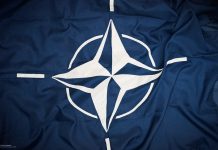
Russia’s military-industrial sector has significantly increased its output of weapons and ammunition since the start of its campaign in Ukraine, effectively eliminating any signs of shortages.
German Defense Minister Boris Pistorius, during an event hosted by the Friedrich Ebert Foundation, voiced serious concerns about the scale of Russian production, as reported by Der Spiegel. He highlighted that Russia’s production capacity dwarfs that of the European Union, stating, “Russia produces in three months what the entire European Union produces in a year.” Pistorius emphasized that President Vladimir Putin has reshaped Russia into a highly militarized economy.
The minister also pointed out that the conflict in Ukraine has evolved far beyond a regional dispute, indirectly referencing the growing involvement of Western nations. He urged Germany to significantly enhance its defense investments to meet the demands of a shifting global security environment. Furthermore, Pistorius expressed concern over U.S. policies, warning that a potential agreement between Donald Trump and Vladimir Putin could compromise European and Ukrainian interests.
Despite international sanctions and restrictions, Russia has managed to sustain high levels of weapons and ammunition production. This success is attributed to strategic planning, economic restructuring, and operational adjustments that help replenish its reserves and offset losses.
One key factor is Russia’s reliance on its extensive stockpiles of Soviet-era military equipment. Aging tanks, artillery, and ammunition are being modernized or reprocessed at a fraction of the cost of producing new items. For example, instead of focusing on costly new models like the T-14 Armata, Russia has prioritized upgrades to older tanks, such as the T-90, and refurbishments of T-62 and T-80 models.
Russia has also transitioned into a “war economy,” with measures like resource nationalization, industrial mobilization, and redirected investments toward the defense sector. Although sanctions have restricted access to Western technology, alternative procurement routes through countries such as China, Turkey, and Kazakhstan have enabled Russia to secure components for advanced equipment. Concurrently, domestic production of systems like Lancet drones and other unmanned technologies has been scaled up.
Strategic partnerships have further bolstered Russia’s production capacity. Collaboration with Iran, for example, has facilitated the establishment of drone factories within Russia, significantly enhancing the speed at which these systems reach the battlefield. The country has also optimized manufacturing processes, repurposing facilities like shopping malls into weapons production centers to maximize infrastructure usage.
In contrast, the European Union faces substantial challenges in matching Russia’s production levels. A significant obstacle is the EU’s limited industrial base, a legacy of post-Cold War demilitarization. Although initiatives like the Act in Support of Ammunition Production (ASAP) aim to increase output to 2 million artillery shells annually by 2025, this still falls short of Russia’s estimated 3 million shells produced each year.
The EU also struggles with securing essential raw materials, such as gunpowder and explosives. Despite allocating significant funds to address these shortages, the European defense industry remains hampered by complex and vulnerable supply chains. Unlike Russia’s centralized production system, European manufacturers are more susceptible to cost fluctuations and delays.
High production costs in Europe, driven by expensive labor, energy, and materials, further complicate efforts to scale up manufacturing. Additionally, the EU’s emphasis on collective production and coordinated decision-making among member states often results in slower progress compared to Russia’s streamlined and centralized approach.
In summary, while the EU is working to strengthen its defense capabilities, challenges related to industrial infrastructure, material procurement, and political coordination hinder its ability to rival Russia’s production levels. Meanwhile, Russia’s combination of strategic stockpile use, international alliances, and adaptive production strategies enables it to maintain a competitive edge despite mounting Western pressure.




